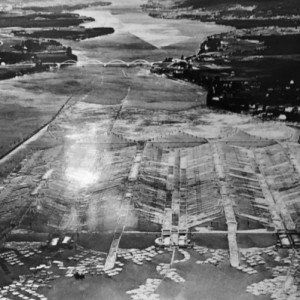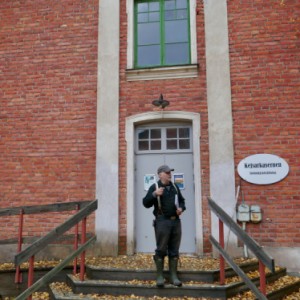Industries that died
Borgafjäll (Borgafell) is a village near the mountains forming the border to Norway, a long way from the Baltic. Imagine you lived in there in the middle of the 1900’s and you sell your forest. How are your trees going to reach the sea? They are going to be floated down to the coast and after being moved across several large lakes, and steered down two rivers, eventually, 300 km later, they will reach Sandslån on the coast, where they will sorted by size and ownership, and gathered into large rafts that are then towed to one of 40 sawmills in the area. There they will be sawn into planks, made into boxes or pit-props, and exported. Much of the timber will end up in the UK.
Today I was at Sandslån, taking part in a photo-meet and guided tour. Jan, HarlingDarling, has blipped the wonderful model of the actual log-sorting sluices and added a couple of extras, so I’ll carry on the story here, also with a couple of extras, without repeating her bits.
My main blip shows the river, looking across where the sorting sluices floated, anchored to the river bed. These sorting sluices filled two thirds of that broad river, as you can see in my extra, a picture taken in 1952. They covered 50 hectares (124 acres) of river. 1957 was the top year and they sorted 23 million logs and employed around 900 people for the 6 month season.
So, back then this was a thriving bustling area, a major Swedish industrial area. 900 people working here at Sandslån, 1000 people working in just one of the 40 saw-mills, thousands more in the other saw-mills and the paper mills, not to mention all those who worked in the cafes, bars, churches, schools, shipping etc. And now it’s nearly all gone and Sandslån is a rather pretty small village, with no shops, no schools and no cafes. There is a youth hostel here, and a campsite, mainly for camper vans and caravans. There is also a museum occupying several of the buildings, run mostly by volunteers.
I mentioned that much of the timber went to the UK. All the buildings here are built of brick, (extra 2) despite the millions of logs that passed by here. These bricks are all from England and they were transported here as ballast in the ships coming to pick up wood!
A really interesting tour!



Comments
Sign in or get an account to comment.


